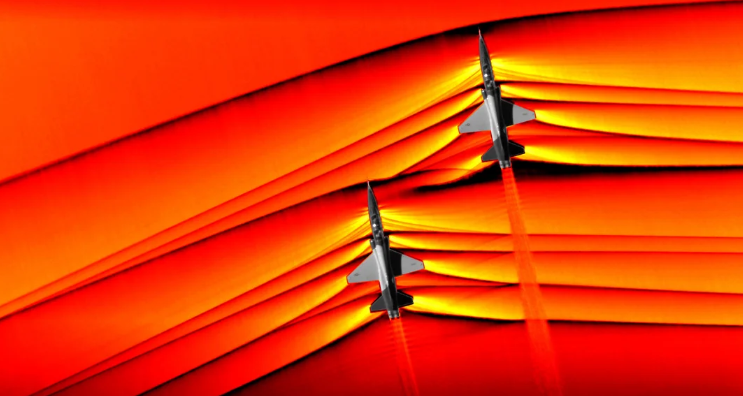As seen here, there are two T-38's going supersonic. What happens when those shockwaves interact? They seem to dissipate in some places on this photo when they interact. Any source online says that they will "produce complex patterns of compression, rarefaction, and reflection."
However I can't find anything on why that happens.

